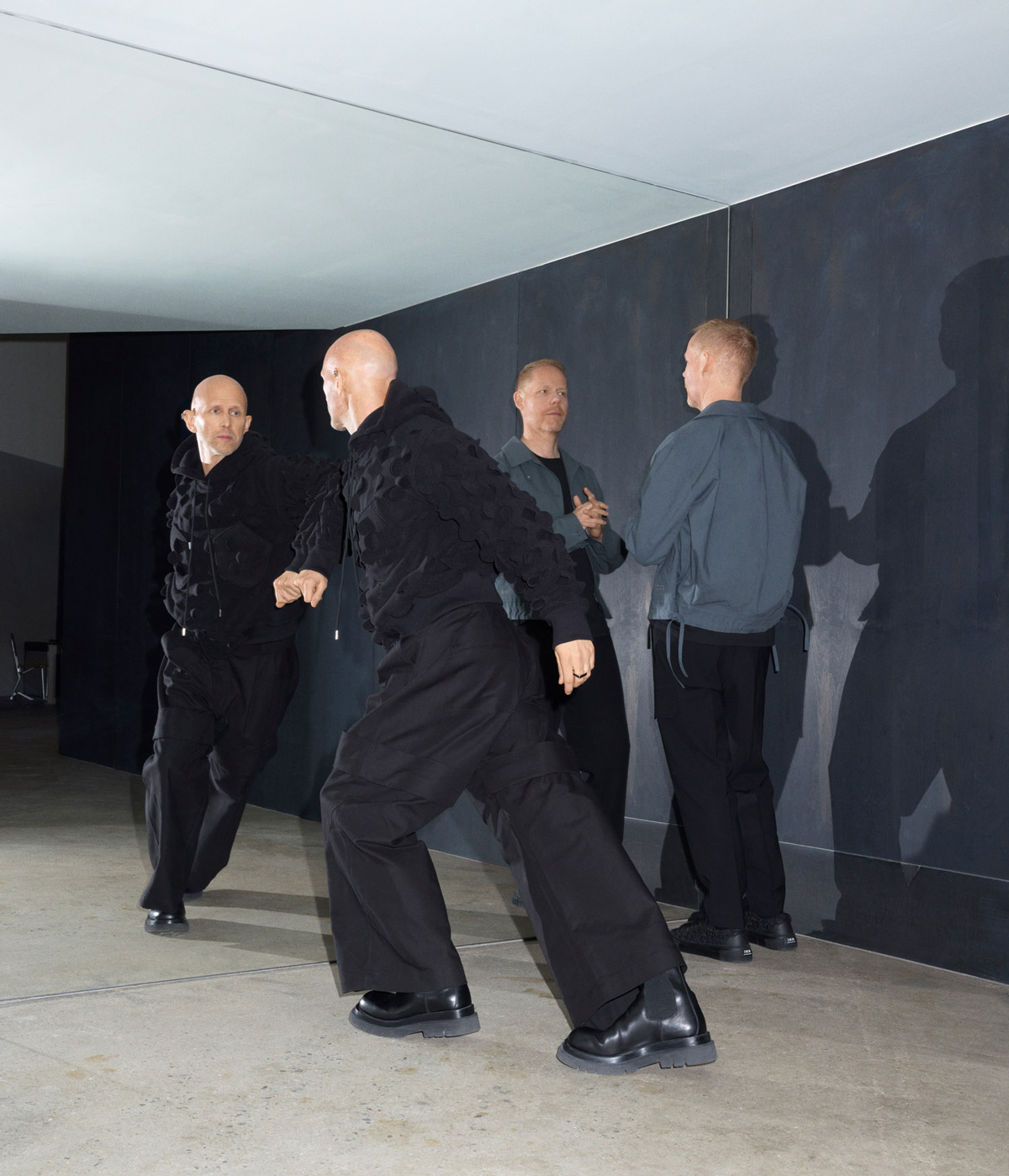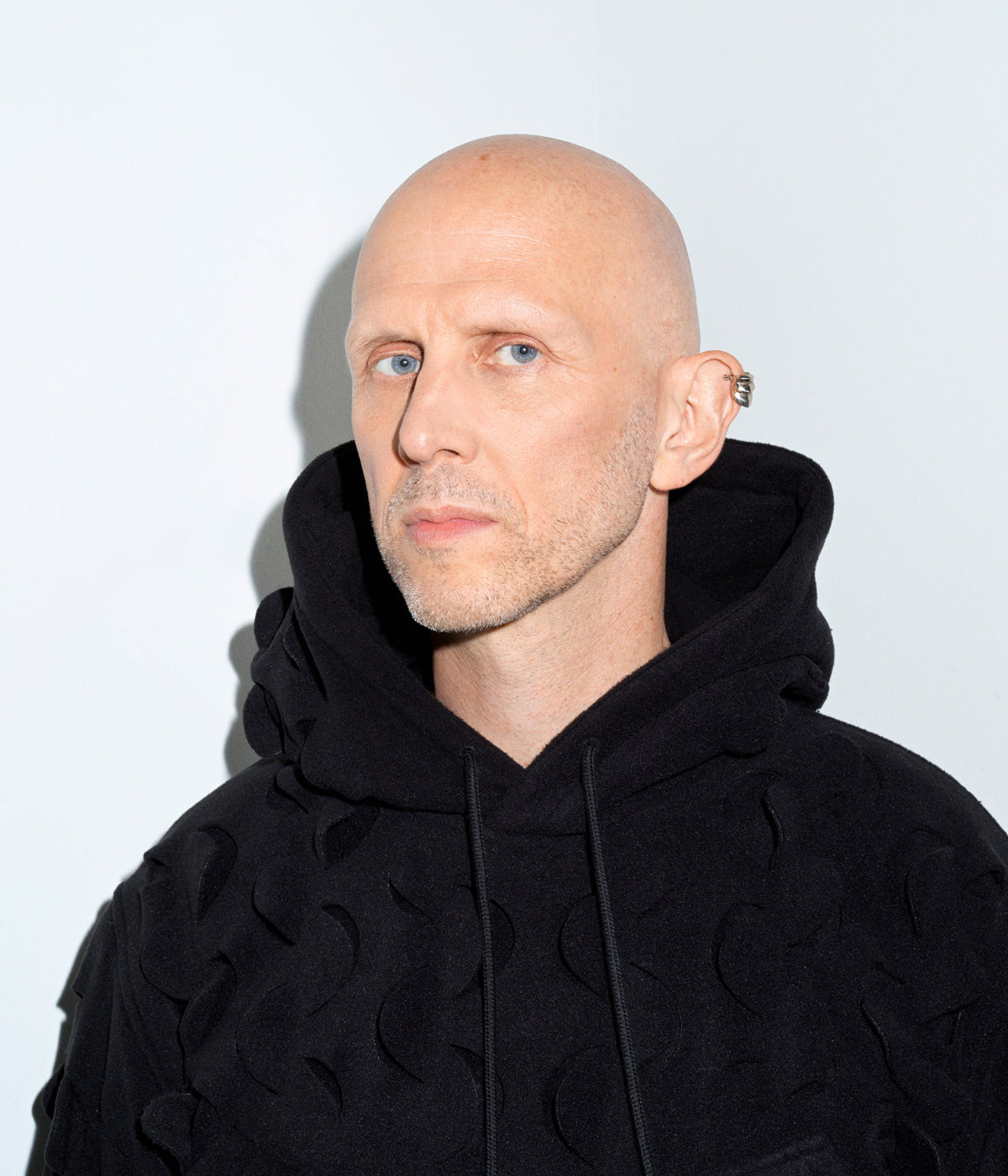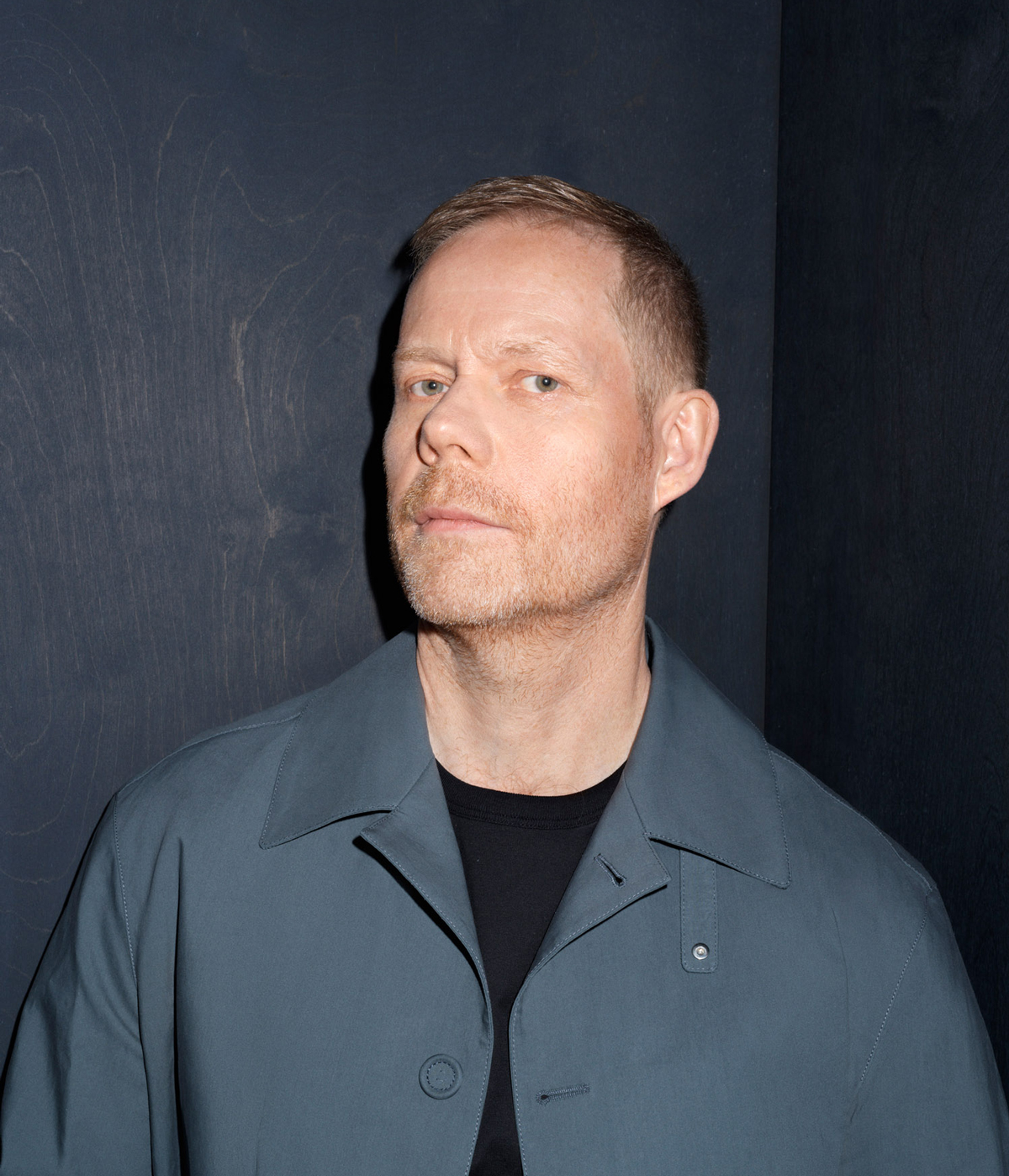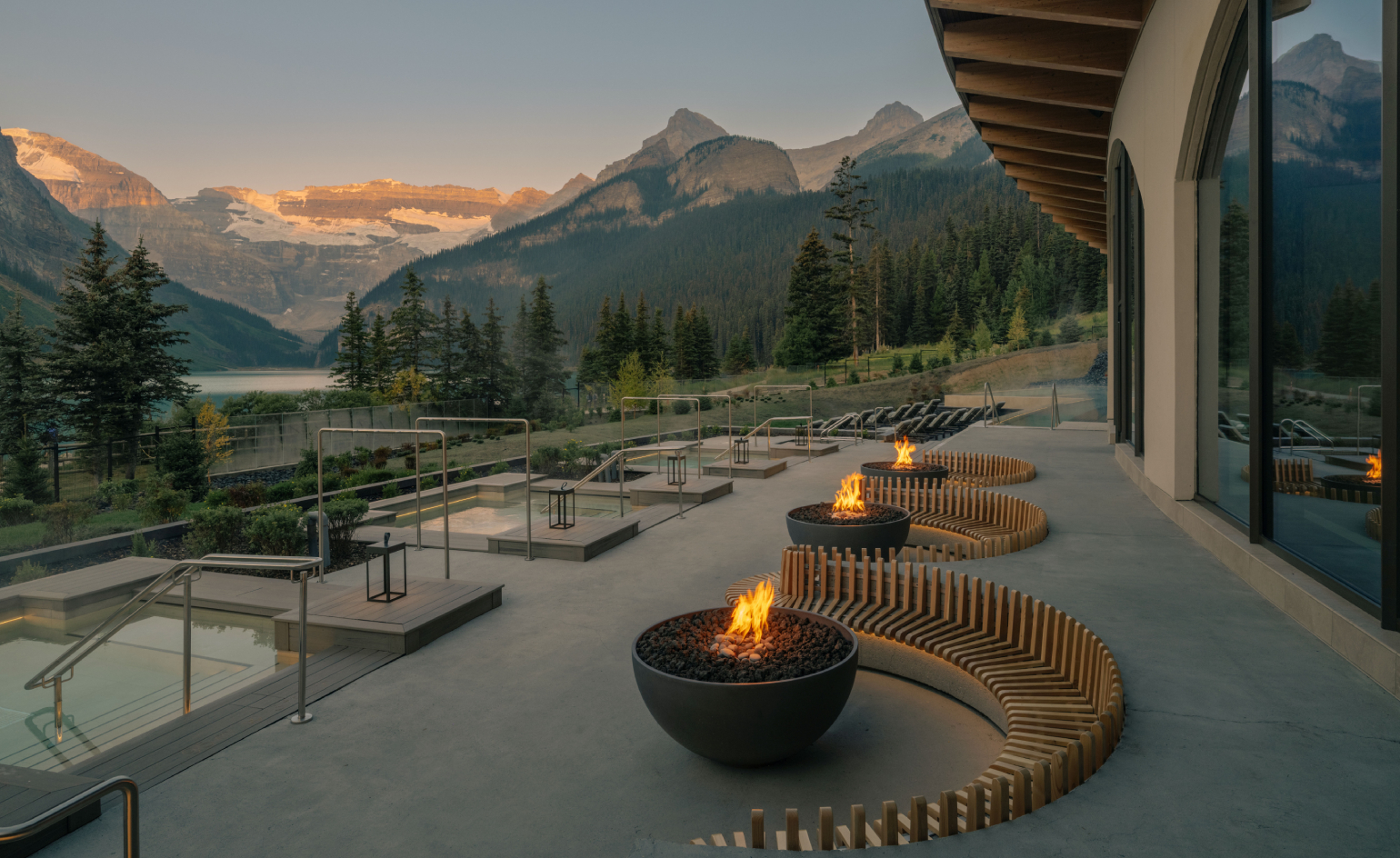Wayne McGregor on turning a post-apocalyptic trilogy by Margaret Atwood into a three-act ballet with Max Richter
Wayne McGregor's latest project is an adaptation of Margaret Atwood’s trilogy of novels, ‘Oryx and Crake’, ‘The Year of the Flood’ and ‘MaddAddam’, marking 16 years of his partnership with composer Max Richter

Sir Wayne McGregor is the master of creative collaborations. As resident choreographer at the Royal Ballet in London, a position he has held since 2006, he has translated an eclectic roster of literary, avant-garde and contemporary references into works for the stage (along with costumes in collaboration with Grace Wales Bonner and with Burberry), as well as taken the helm on film, TV, fashion and music videos projects, and founded his own London-based studio.
His latest project is an adaptation of Canadian author Margaret Atwood’s trilogy of novels, Oryx and Crake, The Year of the Flood and MaddAddam, into a three-act ballet. The project marks 16 years of his partnership with composer Max Richter, whose haunting, post-classical music is the soundtrack to Atwood’s post-apocalyptic nightmare.
As the duo gear up for the Royal Ballet’s performances, titled MaddAddam, in November 2024, following the production’s 2022 debut by the National Ballet of Canada in Toronto, they reflect on how they brought their ballet to life, and why they are capturing a mood, not a story.
Sir Wayne McGregor and Max Richter in conversation
Wayne McGregor: The first time I heard Max’s music was at a concert at the Union Chapel in north London. I knew about Max and his music a bit, but it was the first time that I had experienced live music with electronics. It affected me in an incredible way. I went backstage to say hello, and then reached out about doing something.
Max Richter: Everything we’ve worked on since has been pretty diverse, but what’s so interesting is that even though the projects are quite different, there’s always a feeling of entering this laboratory of possibility.
WM: We’ve got a lot of options about what we’re going to spend our time on, so at the end of the day, it’s got to be something that’s going to get Max fired up. I try to never ask a composer to write for dance, I don’t think that’s interesting.
MR: What I enjoy about the things we do together is that it doesn’t feel prescriptive in any way. What we’re making is a sort of hybrid composite object. Music is part of that, but there are other elements, and they are interacting dynamically all the time. There’s a sort of puzzle-solving aspect to it. You start out in this dark space, and then you move into it by putting objects in it, musical or sensory or whatever they might be. And that feeling of then being able to connect stuff is what’s so exciting, when you start to see how you get feedback loops with other elements and ideas.
Receive our daily digest of inspiration, escapism and design stories from around the world direct to your inbox.
WM: We work quite differently. I like to give a lot of space, to think, this is the territory we’re going to work in, Max how would you respond? The other thing that’s important to me, which sounds a little bit prosaic but is actually critical, is that, in the best possible way, Max is so reliable. And what I mean by reliable is that when he says, I’m going to send you music on X, he sends you music on X.
MR: It’s how we create the thematic universe, and with this specifically, it is dystopian.
WM: And working on this during Covid changed the way that we talked about the novels, because it is about a pandemic and we had a much better understanding of what a pandemic was.
‘Margaret Atwood is a flinty intellect. There is no sentimentality in the books’
Max Richter

Wayne McGregor
MR: There is tenderness in the writing, but Margaret is a very flinty intellect. There’s no sentimentality in the books, but having had the pandemic for real, it made the narrative feel more emotional. And there are a million different languages in it, and that’s really satisfying. Anything works as well, so all kinds of anything are in this music. It’s super diverse. There’s some orchestral music, and electronics and experimental things, and techno. It mirrors this very hallucinatory, multi-world. I guess I’m also trying to make things where the actual notes add up to something in the way that traditional classical music does, just note to note, relationships and geometry. So I knew it could go big, but I also wanted something that could exist just on one or two instruments.
WM: That makes sense to me, because that whole idea that you choreograph to music, which is already descriptive, and then you do it again physically, has never been interesting to me. In a way, I think, our collaborations have partly been, obviously together, but also in parallel. What you’re doing is offering a range of texture that I couldn’t do physically, but that has some kind of correlation with the world that can exist outside of that moment. And I think that’s important.
MR: I agree. The music is this cyclical thing, we kind of know where we’re going with it. So in a way, the detail of the music recedes once we, as the audience, have learnt it in the performance. But it’s the way the movement language occasionally locks together, and your heart just explodes when you see that, all of a sudden, there’s something, and that moment is life-changing.
WM: And you’re not telling a traditional narrative. It’s how we live and how we experience the world anyway. We don’t experience it in the state of always knowing what our thoughts are. I have always thought that was a bit strange in an art form, like dance, which does so well with ambiguity. It doesn’t deal well with concreteness. Why are you trying the concrete thing? I just don’t get that. How do you describe the characters, the costumes, the synopsis...
MR: It would be a nightmare.

Max Richter
‘If you’ve never read the novels, you will get a sense of their spirit in the work, which I think is what dance does best’
Wayne McGregor
WM: We would have no chance. And I think that’s one of the reasons that Margaret let us do it. She knew we were going to do a rendering, which was about the feeling, the somatic or acoustic feeling of that work. And then by laying that out, what happens is that all of these interesting sets of relationships emerge. Does it matter that that character you see in the middle of Act Two is Toby, or is it about the way in which they’re moving and interacting with others that tells you something about that character? It’s much more implicit, but I think it’s a different way of experiencing the novels. Margaret was thrilled; I was worried about that because we’ve had lots of, well, dead authors. To have a living author who was going to be there and watching and experiencing it – we wanted her to like it. And I don’t ever have that feeling. I wanted her to be blown away. I wanted to give this thing to her, of the thing that she inspired in us. If you’ve never read the novels, you will get a sense of their spirit in the work, which I think is what dance does best. It’s the essence of stuff, not a specific thing itself.
MR: It’s one of the things that I love about the work we do together – this collective thinking. It’s a wonderful thing to be around.
WM: It’s always about connecting dance to the wider world. It’s important. And some people get to the album through the ballet, and some people get to the ballet through the concert. There’s all these different entry points to the world that we’re sharing.
Wayne McGregor’s production of MaddAddam runs from 14-30 November 2024 at the Royal Opera & Ballet House, London WC2. Tickets, £8 – £145, rbo.org.uk
This article appears in the November 2024 issue of Wallpaper*, available in print on newsstands from 11 October, on the Wallpaper* app on Apple iOS, and to subscribers of Apple News +. Subscribe to Wallpaper* today

Wayne McGregor and Max Richter photographed in September 2024 at McGregor’s studio at Here East in London’s Olympic Park
Hannah Silver is the Art, Culture, Watches & Jewellery Editor of Wallpaper*. Since joining in 2019, she has overseen offbeat art trends and conducted in-depth profiles, as well as writing and commissioning extensively across the worlds of culture and luxury. She enjoys travelling, visiting artists' studios and viewing exhibitions around the world, and has interviewed artists and designers including Maggi Hambling, William Kentridge, Jonathan Anderson, Chantal Joffe, Lubaina Himid, Tilda Swinton and Mickalene Thomas.
-
 Nela is London's new stage for open-fire gastronomy
Nela is London's new stage for open-fire gastronomyA beloved Amsterdam import brings live-fire elegance to The Whiteley’s grand revival
-
 How we host: with Our Place founder, Shiza Shahid
How we host: with Our Place founder, Shiza ShahidWelcome, come on in, and take a seat at Wallpaper*s new series 'How we host' where we dissect the art of entertaining. Here, we speak to Our Place founder Shiza Shahid on what makes the perfect dinner party, from sourcing food in to perfecting the guest list, and yes, Michelle Obama is invited
-
 Matteo Thun carves a masterful thermal retreat into the Canadian Rockies
Matteo Thun carves a masterful thermal retreat into the Canadian RockiesBasin Glacial Waters, a project two decades in the making, finally surfaces at Lake Louise, blurring the boundaries between architecture and terrain